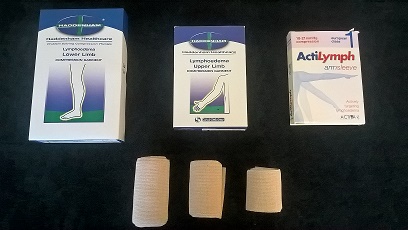What is Combined Decongestive Therapy for Lymphoedema?
This is best understood by first looking at a deeper level into the anatomy and function of the lymphatic system.
The lymphatic system is part of our immune system and it has many functions. It is designed to transport our defence cells around the body allowing them to locate and fight bacterial invaders as well as removing excess fluid and waste products from the tissue. The lymph nodes also play their role in defending the body by providing the correct environment for the creation of new lymphocytes (white blood cells), functioning as filtering stations for the breakdown of harmful bacteria and as storage facilities for non-organic materials (such as dust and dyes) which the body cannot process. An efficient lymphatic system ensures healthy connective tissue and swift removal of bacteria and pathogens.
Unfortunately, for some people, the lymphatic system is disrupted :
Primary lymphoedema can manifest at birth, puberty or in later life and may be due to either poor development or an absence of some lymph vessels.
Secondary lymphoedema may develop due to vessels becoming damaged or severed or lymph nodes being removed during surgery. It can also appear after infection or severe physical trauma. The lymph fluid accumulates and "backs up" in the connective tissue and results in the visible swelling which is so indicative of those with lymphoedema.
Combined Decongestive Therapy can help with both primary and secondary lymphoedema by increasing the flow of lymph away from affected areas and into healthy lymphatic vessels to then be processed through the nodes. Imagine a traffic jam on a motorway - the motorway may be blocked but we have all the A and B roads around the area which are still available for us to use to get the traffic (in this case lymph) moving again. In addition it can work on fibrosis (deposits of firm scar tissue) and thus increase the number of available channels through which the fluid can move.
The components of Combined Decongestive Therapy are :
Manual Lymph Drainage
Compression bandaging
Skin Care
Compression garments
Exercise
Compression pump
Deep tissue oscillation
All of these will be discussed at the initial consultation as well as advice on the frequency of treatments and then subsequent maintenance treatments and homecare.
